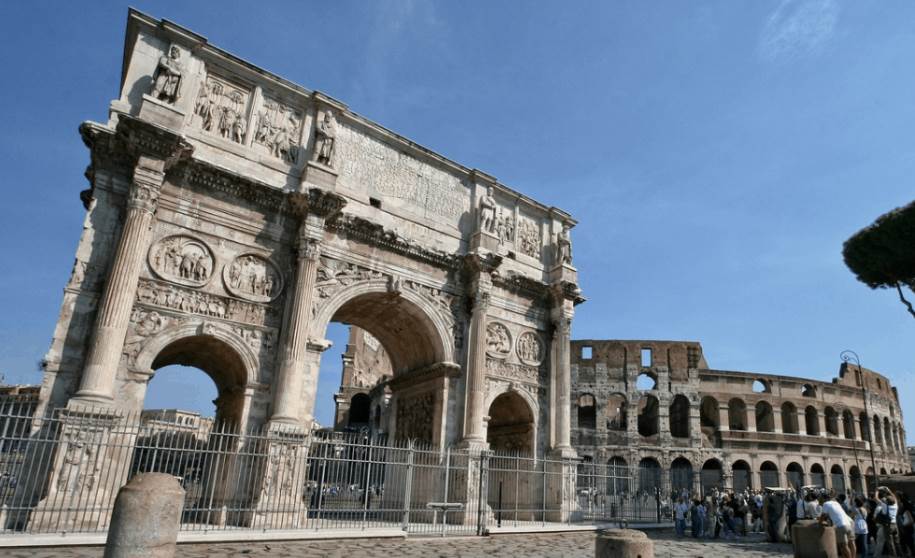In Rome, you can find some amazing ancient monuments.
A triumphal arch dedicated to the Roman Emperor Constantine I is located in the middle of the historical center of Rome, right between the Roman Forum and the Colosseum.
In this post, You’ll discover the ultimate list of facts about the Arch of Constantine, one of the most famous monuments in Rome.
1. When was the Arch of Constantine built?
The Arch of Constantine was constructed between 312 and 315 A.D. during the reign of Emperor Constantine I, also known as Constantine the Great.
Constantine the Great became an emperor of ancient Rome in 306 A.D. after his father, Emperor Constantius Chlorus died.
After a series of civil wars that followed, Constantine the Great became sole Emperor of the Roman Empire in 324 A.D. and therefore became the founder of the “Constantinian dynasty,” also referred to as the “Neo-Flavian Dynasty.”
Constantine the Great ruled until he died in 337 A.D.
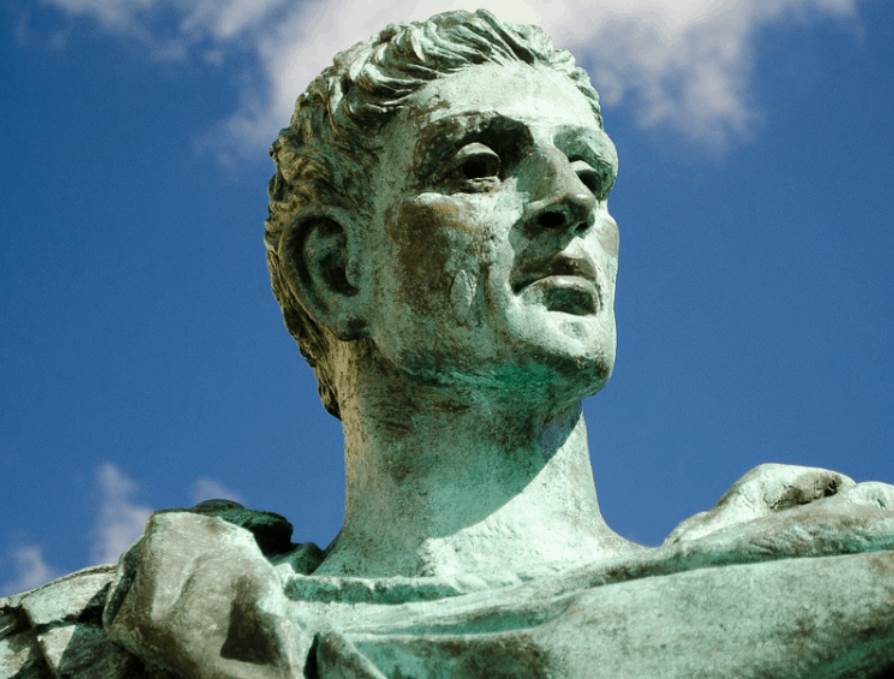
2. Why was the Arch of Constantine built?
The Arch of Constantine was built to commemorate the victory of Constantine the Great over the reigning Emperor Maxentius. The Senate also commissioned it to commemorate the “decennalia,” the celebration of 10 years of Constantine’s reign.
His famous victory happened in what’s called the “Battle of the Milvian Bridge.” The Milvian bridge was an important route over the Tiber River.

The battle took place on October 28, 312 A.D. and the army of Constantine won a decisive victory, killing Emperor Maxentius in the process.
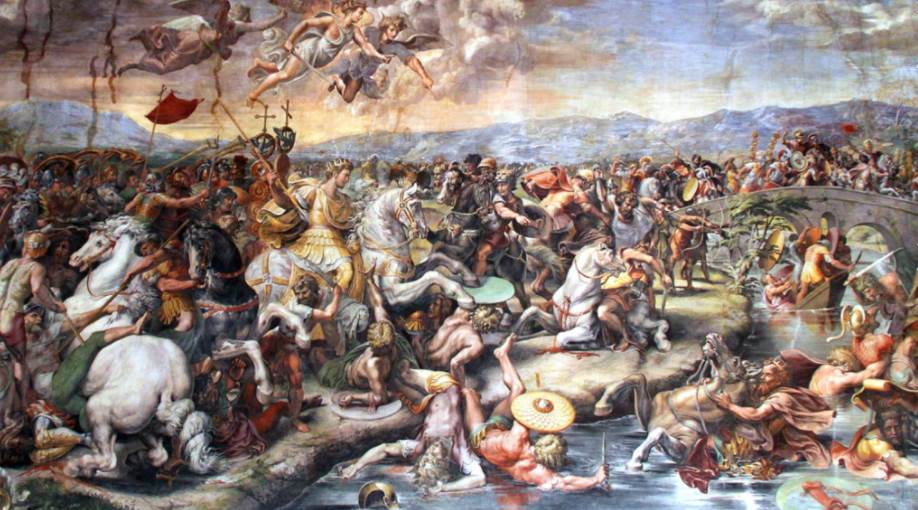
3. Where is the Arch of Constantine located exactly?
The Arch of Constantine stands majestically right next to the Colosseum and the Roman Forum, the historic plaza of ancient Rome.
It’s part of ancient Rome’s route of triumphs, called the “Via Triumphalis.” This route was located in between two of Rome’s 7 hills, the Palatine Hill and the Caelian Hill.
After the parade to celebrate one of ancient Rome’s victories marched through the Circus Maximus, they would pass underneath the Arch of Constantine, turn left, and cross the Roman Forum.

4. How is the Arch of Constantine decorated?
One of the most interesting facts about the Arch of Constantine is that it has a lot of older works of art, sculptures, and reliefs, for example, integrated into it.
Faces of past emperors were re-sculpted to resemble Constantine himself, which is in line with the expression of triumph one would expect on a triumphal arch.
Why there weren’t many new pieces of art created for the Arch of Constantine is up for debate. It’s believed that there simply weren’t any artists available in this period with the skills to create glorious pieces of art.
In a sense, this notion could be interpreted as being symbolic for the Roman Empire as a whole, finding itself in a state of decline.
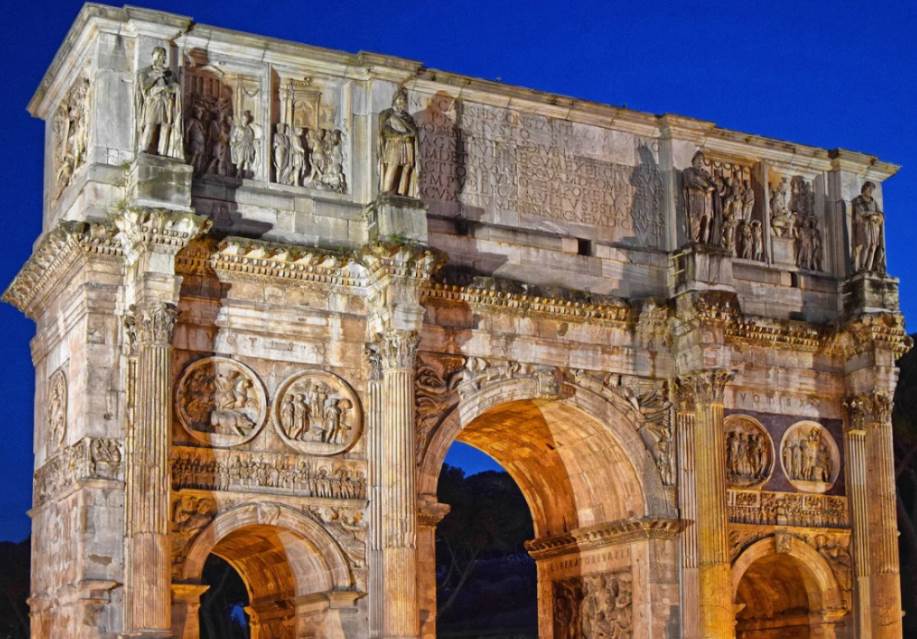
5. Which monuments are modeled on the Arch of Constantine?
The Arch of Constantine is the model for numerous triumphal arches all around the world. Below is an overview of some of the most renowned:
- Arc de Triomphe – Paris / France
- Brandenburg Gate – Potsdam / Germany
- Cinquantenaire Arch – Brussels / Belgium
- Marble Arch – London / England
- Siegestor – Munich / Germany
- Arch of Triumph / Pyongyang / North Korea
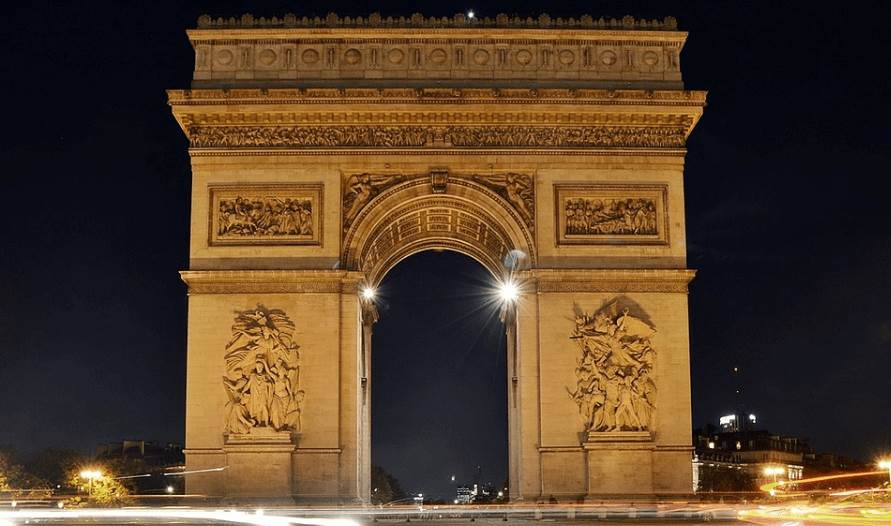
More interesting facts about the Arch of Constantine
6. To build the Arch of Constantine, various pieces of art have been assembled. These include pieces from monuments built by emperors Trajan (98–117), Hadrian (117–138), and Marcus Aurelius (161–180).
7. There are various theories as to why other pieces of art were used to create the Arch of Constantine. Apart from the main theory of simply there being a lack of quality artists, another one is that these pieces could have been a deliberate tribute to Roman greatness.
8. Because of this theory, and the fact that the newly created art that decorated the Arch of Constantine was in such a big contrast with each other, it got the nickname “Cornacchia di Esopo” which translates to “Aesop’s Crow.” This is a reference to a story in which a crow is flattered and therefore loses a piece of cheese it’s holding to the fox who devours it. In other words, flatterers thrive on fools’ credulity.
9. The Arch of Constantine stands about 21 meters (69 ft) tall and is about 26 meters (85 ft) wide.

10. The Arch of Constantine has 3 archways, a big one in the center, which is where the emperor would have passed when entering the city after a victory, and 2 smaller ones at the sides.
11. There are some round reliefs included in the Arch, and the horizontal relief directly below those are the ones that were added during Constantine’s reign. These depict the battles won by Constantine, and mainly the battle he won against Maxentius. That was also the reason the Arch of Constantine was built in the first place.
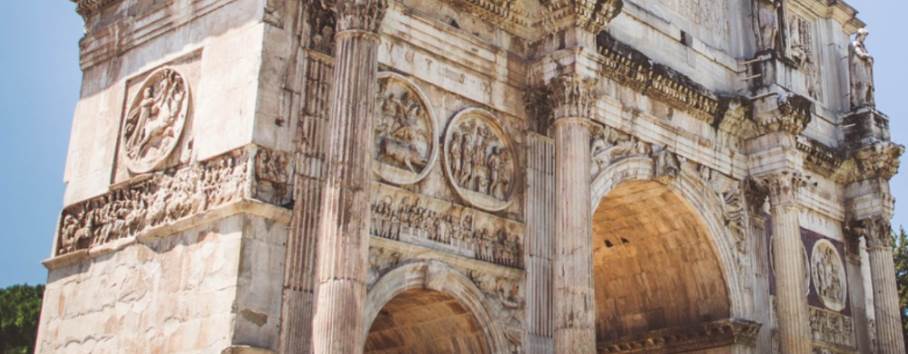
12. According to German Philosopher Walter Benjamin, history is seen through the eyes of the victor. This means that history might have a completely different meaning when told by the losing camp. In the case of the Arch of Constantine, this could be very literal. It’s believed that Constantine did everything in his power to erase the emperor he just defeated, Maxentius, from history. This is referred to as “Damnatio memoriae” which translates to “condemnation of memory.” Could it be that the Arch of Constantine was actually the Arch of Maxentius before?
13. One surprising thing is that Maxentius, in times of emperors actually moving out of Rome, wanted to rebuild it. Therefore he was actually loved by the Roman people during the early years of his reign and was described as “conservator urbis suae” (preserver of his city).
14. Another peculiar thing is the fact that 2 months after the Senate commissioned the construction of the Arch commemorating Constantine, he left the city and didn’t return to it until the year 326.
15. The main inscription of the Arch of Constantine used to be bronze letters but those have been lost to history. The inscription can still be read and here’s what it says:
imp(eratori) · caes(ari) · fl(avio) · constantino · maximo · p(io) · f(elici) · avgusto · s(enatus) · p(opulus) · q(ue) · r(omanus) · qvod · instinctv · divinitatis · mentis · magnitvdine · cvm · exercitv · svo · tam · de · tyranno · qvam · de · omni · eivs · factione · vno · tempore · ivstis · rempvblicam · vltvs · est · armis · arcvm · trivmphis · insignem · dicavit
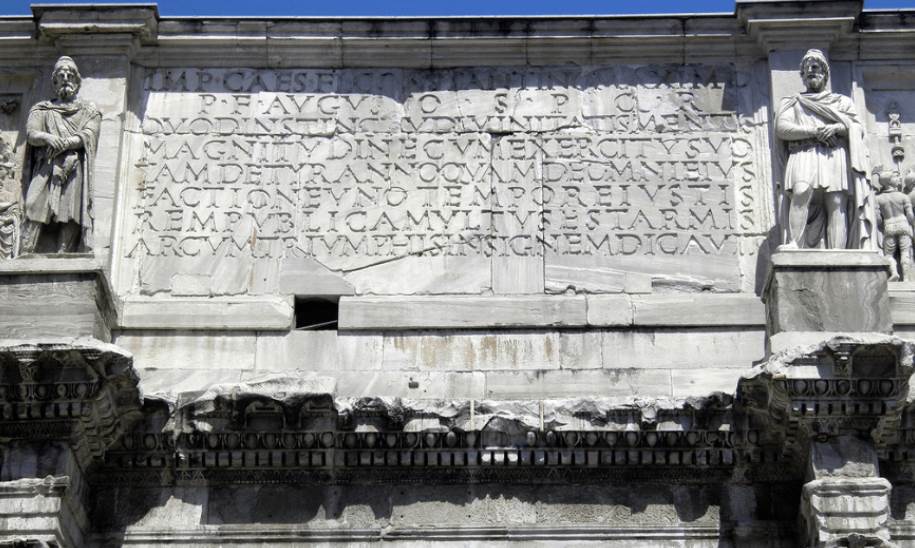
This literally translates to: “To the Emperor Caesar Flavius Constantinus, the greatest, pious, and blessed Augustus: because he, inspired by the divine, and by the greatness of his mind, has delivered the state from the tyrant and all of his followers at the same time, with his army and just force of arms, the Senate and People of Rome have dedicated this arch, decorated with triumphs.”
16. Constantine the Great was the first Roman emperor to convert to Christianity. He did this only on his deathbed though as he lived most of his life as a Pagan. He did play a very important role in the tolerance of Christianity in the Roman Empire. He ordered the First Council of Nicaea in 325 which produced the statement of Christian belief known as the Nicene Creed.
17. The circle-shaped reliefs on the Arch of Constantine were created during the reign of Emperor Hadrian, over 200 years before the Arch was constructed. These reliefs display scenes of hunting and sacrificing, for example, “hunt of a boar” as an offer to Apollo and “hunt of a lion” as a sacrifice to Hercules.
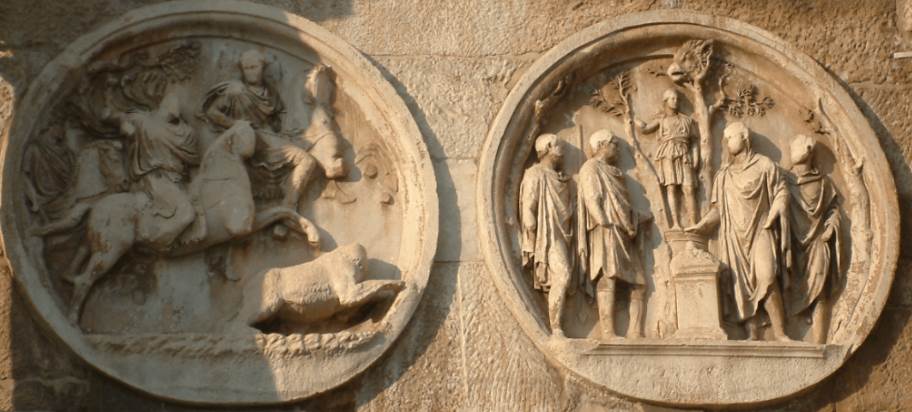
18. There are 8 Corinthian columns integrated into the Arch of Constantine, and these were taken from a monument dedicated to emperor Flavian dating from the 1st century A.D.
19. Just as with many other ancient Roman monuments, the Middle Ages weren’t a good period for the Arch of Constantine. It has actually been part of a medieval fortress under the Frangipane and one yellow marble column was removed by Pope Clement VIII to be put in a doorway of the St. John Lateran church.

20. As you can see from the painting above, the Arch of Constantine looked a bit shabby during the 17th century. There was even a wall and a house built against it and plants growing from its openings. In the early 21st century, extensive cleaning assured that the Arch of Constantine has been restored to look a lot more as its former glory.
21. Triumphal arches were built all around the Roman Empire. The creation of this type of monument started in the Roman Republic with “honorific arches.” None of those survived and the only ones remaining to date from the empirical period starting in 1 B.C. Triumphal arches have become the icons of ancient Roman architecture, and of all the triumphal arches ever built, the Arch of Constantine is the largest.
